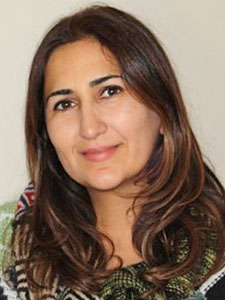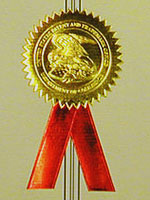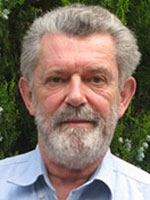Recent News
NQVL Design Phase Award
October 1, 2025
CHTM Joins NSF's NQVL Pilot Projects
August 9, 2024
OSE PHD, Dr. Xuefeng Li - Wins The Outstanding Interdisciplinary Graduate Programs Award
May 10, 2024
Dr. Ali Rastegari - 2024 OSE Best Dissertation Award Winner
May 10, 2024
News Archives
U.S. Patent issued to Arissian et al. for "Nested Frequency Combs"
May 25, 2017 - CHTM

Ladan Arissian
U.S. Patent No. 9,653,877, “Nested frequency combs," has been issued to Arissian et al. by the U.S. Patent & Trademark Office (USPTO). Ladan Arissian, the principal investigator, is an Assistant Professor with The University of New Mexico's (UNM) Department of Electrical and Computer Engineering (ECE) and the Center for High Technology Materials (CHTM). Also listed on the patent is Jean-Claude Diels, Professor with UNM ECE, Physics & Astronomy, and CHTM.
Diels and Arissian are co-authors of many research papers and the textbook "Lasers: The Power and Precision of Light," named a CHOICE Outstanding Academic Title in the Engineering category in 2012.
Abstract
Apparatus, systems, and methods of generating multi combs can be used in a variety of applications. In various embodiments, a passive resonator can be disposed in the laser cavity of a mode-locked laser to generate a nested frequency comb. The passive resonator can be a sample under investigation, where a characteristic of the sample is determined using the generated nested frequency comb. Additional apparatus, systems, and methods are disclosed.

Background
An optical frequency comb is an optical spectrum of equidistant lines. The use of frequency combs as a tool may depend on the spacing between teeth (lines) of the comb. Mode-locked lasers can provide accurate frequency combs. A mode locked laser produces a stream of identical pulses, which can have a duration of only several femtoseconds, at a repetition rate typically in the range of 70 to 150 MHz. In the frequency domain, the laser output consists of a frequency comb having equidistant lines. Because these lines are exactly equally spaced, this frequency comb can be used as a ruler for optical frequencies. Frequency combs may provide enhancements in other areas of measurement.
Source
In addition to the ECE, Arissian is a Research Assistant Professor in the Optical Science and Engineering program at UNM, where her research interests include:
- Ultrafast Phenomena
- Attosecond Science
- Laser Sensors
- Laser Filaments
Arissian was previously a Research Associate at the Physics Department of Texas A&M University, performing research in attosecond science at the National Research Council of Canada. She has an M.S. in Nuclear Engineering (Medical Imaging), and an M.S. in Theoretical Condensed Matter Physics. She holds a Ph.D. in Optical Science & Engineering from UNM. She has been involved in teaching from high school level physics to graduate courses in Optics.
Arissian has published 40 articles and conference presentations, three book chapters and three patents in laser physics. She has authored or co-authored 124 research papers with 686 citations.
Arissian is also an Adjunct Professor in the Department of Physics at the University of Ottawa, where her fields of interest include:
- Frequency comb and metrology
- Laser based sensors
- Light filaments
- Remote sensing
- Plasma dynamics
- Parametric amplification
- Nonlinear optics

Jean-Claude Diels
Diels has taught at UNM and been a CHTM faculty member since 1987. He has an M.S. and a Ph.D. in Physics Engineering from the University of Brussels, Belgium. Diels has advised over 57 Ph.D. and 17 Masters students at UNM. In July 2016, Diels made a presentation in Barcelona, Spain for the OSA Foundation’s Siegman International School on Lasers. Diels was named the 51st Annual Research Lecturer at UNM in April 2006, and received the 2006 Engineering Excellence Award of the Optical Society of America (OSA) for the invention of the IPI. He is a Senior Member of the IEEE and Fellow of the Optical Society of America.
He is the Principal Investigator of the Diels Research Group. Fourteen issued U.S. patents are a testimony to the strength and diversity of the Diels Group’s research. The group engages in collaborations with other organizations around the world in experimental investigation of:
- Ultrafast phenomena
- Development of femtosecond laser sources
- Optical imaging using femtosecond range gating
- Nonlinear optics
- Coherent interactions between light and matter
- Picosecond and subpicosecond technology
- Multiphoton excitation of molecules and atoms
- Laser gyroscopes
- Study of nonlinear interfaces
- Multiple Quantum Wells
- Laser induced discharges
- Propagation of intense pulses in air
- Adaptive Optics


